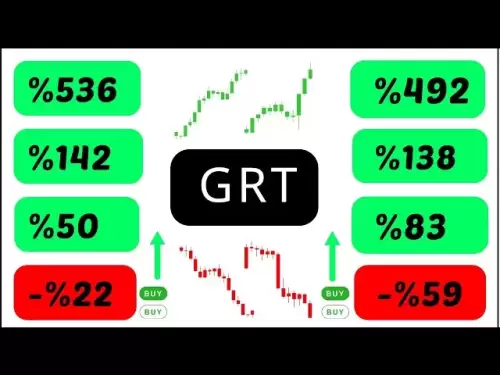-
 Bitcoin
Bitcoin $107,467.9126
1.26% -
 Ethereum
Ethereum $2,447.5288
-0.12% -
 Tether USDt
Tether USDt $1.0005
0.00% -
 XRP
XRP $2.1921
0.13% -
 BNB
BNB $647.2897
0.50% -
 Solana
Solana $144.8627
-0.37% -
 USDC
USDC $0.9996
-0.03% -
 TRON
TRON $0.2732
0.10% -
 Dogecoin
Dogecoin $0.1652
-0.18% -
 Cardano
Cardano $0.5700
-2.87% -
 Hyperliquid
Hyperliquid $37.0274
-1.81% -
 Bitcoin Cash
Bitcoin Cash $484.6957
0.19% -
 Sui
Sui $2.7354
-2.19% -
 Chainlink
Chainlink $13.1727
-1.49% -
 UNUS SED LEO
UNUS SED LEO $8.9978
-0.04% -
 Stellar
Stellar $0.2421
-2.33% -
 Avalanche
Avalanche $17.5633
-3.51% -
 Toncoin
Toncoin $2.8476
-1.94% -
 Shiba Inu
Shiba Inu $0.0...01166
-0.56% -
 Litecoin
Litecoin $85.1071
0.09% -
 Hedera
Hedera $0.1502
-2.96% -
 Monero
Monero $310.2774
-1.64% -
 Dai
Dai $0.9999
-0.01% -
 Polkadot
Polkadot $3.3584
-1.88% -
 Ethena USDe
Ethena USDe $1.0003
-0.04% -
 Bitget Token
Bitget Token $4.4443
2.90% -
 Pi
Pi $0.6242
14.04% -
 Uniswap
Uniswap $6.9774
-2.86% -
 Pepe
Pepe $0.0...09535
-5.05% -
 Aave
Aave $256.7574
-3.35%
How to track transaction records through Bitcoin addresses?
Bitcoin transactions can be tracked using blockchain explorers like Blockchain.com by inputting an address to view its transaction history and flow of Bitcoin over time.
Mar 27, 2025 at 02:36 pm
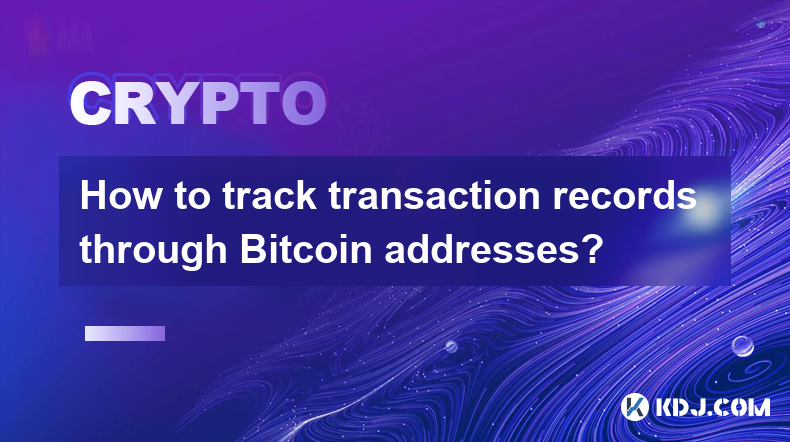
Understanding Bitcoin Addresses and Transaction Tracking
Bitcoin transactions are recorded on the public blockchain, a distributed ledger accessible to anyone. Each transaction involves a sender's Bitcoin address, a receiver's Bitcoin address, and the amount of Bitcoin transferred. Tracking these transactions relies on understanding how Bitcoin addresses function and utilizing blockchain explorers. A Bitcoin address is essentially a cryptographic hash, a unique identifier that doesn't reveal the identity of the owner. However, by analyzing the blockchain data associated with a specific address, we can reconstruct its transaction history.
Utilizing Blockchain Explorers to Track Transactions
Blockchain explorers are websites that provide a user-friendly interface to access and search the Bitcoin blockchain. Popular options include Blockchain.com, BlockCypher, and others. These explorers allow you to input a Bitcoin address and view its associated transactions. The information displayed typically includes the transaction ID (TXID), timestamp, the amounts sent and received, and the addresses involved in the transaction. This allows you to trace the movement of Bitcoin associated with a specific address over time.
Step-by-Step Guide to Tracking Bitcoin Transactions
To track Bitcoin transactions using a blockchain explorer, follow these steps:
- Find a reputable blockchain explorer: Choose a well-known and trusted explorer like Blockchain.com or BlockCypher. Ensure it's secure to protect your privacy.
- Input the Bitcoin address: Paste the Bitcoin address you want to track into the search bar provided on the explorer's website.
- Review the transaction history: The explorer will display a list of all transactions associated with that address, showing incoming and outgoing Bitcoin transfers.
- Analyze individual transactions: Click on each transaction to see detailed information, including the amounts, timestamps, and involved addresses.
- Follow the flow of Bitcoin: By examining subsequent transactions, you can trace the Bitcoin's movement through the network. This may involve multiple addresses.
Remember, the information provided by blockchain explorers is public and transparent. Anyone can access this data.
Privacy Considerations and Limitations
While blockchain explorers offer valuable insights into Bitcoin transaction history, it's important to understand their limitations. A Bitcoin address itself doesn't reveal the user's identity. However, through techniques like analyzing transaction patterns and linking addresses to known entities, it might be possible to infer some information about the owner. Using a mixing service or a privacy-focused coin can help enhance your privacy. Also, remember that not all transactions are immediately visible on the blockchain; there's a confirmation time involved.
Advanced Techniques and Tools
For more in-depth analysis, advanced tools and techniques exist. These might include using specialized software to visualize transaction graphs, identifying clusters of addresses, and using data analysis to uncover potential relationships between addresses. However, these methods often require technical expertise and may involve complex data processing. Always use these tools responsibly and ethically. Respect the privacy of others and avoid engaging in activities that violate the law.
Interpreting Transaction Data
Understanding the data presented by blockchain explorers is crucial for accurate interpretation. The displayed amounts represent the quantity of Bitcoin transferred, usually in Satoshis (the smallest unit of Bitcoin). The timestamps indicate when the transaction was recorded on the blockchain. Note that the confirmation time varies, and a transaction is not considered final until it has received a sufficient number of confirmations. Always verify the information you find with multiple sources to ensure accuracy.
The Role of Transaction IDs (TXIDs)
Each Bitcoin transaction is assigned a unique Transaction ID (TXID). This alphanumeric string acts as a fingerprint for that specific transaction. TXIDs are essential for tracking individual transactions within the broader context of an address's transaction history. Using a TXID, you can directly access the details of a particular transaction on any blockchain explorer. This allows for precise tracking of Bitcoin movements within a complex network of transactions.
Frequently Asked Questions
Q: Can I track all Bitcoin transactions using a single address?
A: No, a Bitcoin address only reveals transactions directly involving that specific address. It won't show transactions involving other addresses owned by the same individual.
Q: Is tracking Bitcoin transactions completely anonymous?
A: No, while Bitcoin addresses don't directly reveal identities, sophisticated analysis can sometimes link addresses to individuals or entities. Privacy tools can mitigate this risk.
Q: How long does it take for a Bitcoin transaction to appear on a blockchain explorer?
A: The time varies, depending on the network congestion. Generally, it takes a few minutes to several hours for a transaction to be fully confirmed and visible on the blockchain.
Q: Are all blockchain explorers equally reliable?
A: No, some explorers may be more reliable than others. Stick to well-established and reputable explorers to ensure data accuracy and security.
Q: Can I track transactions on other cryptocurrencies besides Bitcoin?
A: Yes, each cryptocurrency has its own blockchain and explorers, allowing you to track transactions using similar methods.
Q: What if the Bitcoin address I'm tracking is associated with illegal activity?
A: Tracking transactions associated with illegal activity is ethically problematic and may have legal ramifications. Always adhere to local laws and regulations.
Q: Can I use blockchain explorers to recover lost Bitcoin?
A: You can use blockchain explorers to see if the lost Bitcoin has been moved from your address. However, recovering the Bitcoin itself requires access to the private keys associated with the address.
Q: Are there any risks associated with using blockchain explorers?
A: The primary risk is the potential exposure of your own Bitcoin addresses if you use them carelessly. Always use reputable explorers and be mindful of the information you share.
Q: Can I use a Bitcoin address to identify the owner's real-world identity?
A: Not directly. Bitcoin addresses are pseudonymous. However, sophisticated analysis might be able to link an address to an individual or entity through other means. This is often difficult and requires extensive investigation.
Disclaimer:info@kdj.com
The information provided is not trading advice. kdj.com does not assume any responsibility for any investments made based on the information provided in this article. Cryptocurrencies are highly volatile and it is highly recommended that you invest with caution after thorough research!
If you believe that the content used on this website infringes your copyright, please contact us immediately (info@kdj.com) and we will delete it promptly.
- Bitcoin's Market Dominance: A Virtual Asset Overview in '25
- 2025-06-26 12:25:13
- Ministry of Finance, Silver Coin, Golden Year: A Collector's Gem
- 2025-06-26 12:25:13
- Fiat Fading, Bitcoin at $107K, USD at Cycle Lows: What's Going On?
- 2025-06-26 13:25:12
- XRP Price Prediction: June 26th - Breakout Incoming?
- 2025-06-26 12:50:12
- Railway Protests and Strikes: A Global Perspective
- 2025-06-26 13:07:14
- Bitcoin, Ethereum, and Crypto ETFs: What's the Deal?
- 2025-06-26 13:25:12
Related knowledge
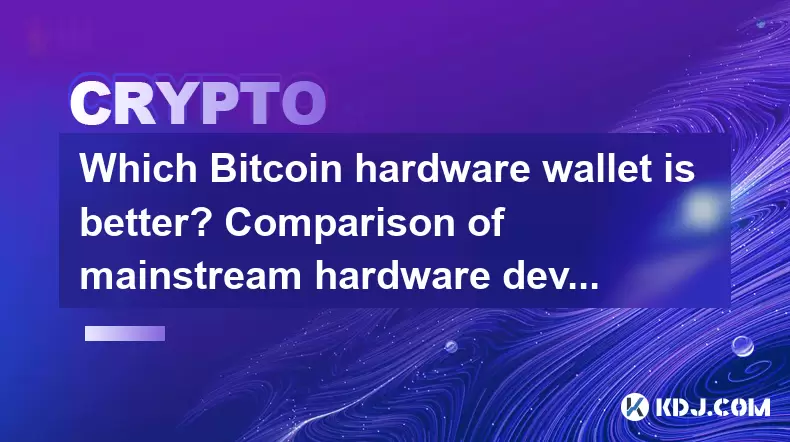
Which Bitcoin hardware wallet is better? Comparison of mainstream hardware devices
Jun 16,2025 at 02:08am
What Is a Bitcoin Hardware Wallet?A Bitcoin hardware wallet is a physical device designed to securely store the private keys associated with your cryptocurrency holdings. Unlike software wallets, which are more vulnerable to online threats, hardware wallets keep private keys offline, significantly reducing the risk of unauthorized access. These devices ...

What are Bitcoin non-custodial wallets? Self-controlled private key recommendation
Jun 16,2025 at 11:29pm
Understanding Bitcoin Non-Custodial WalletsA Bitcoin non-custodial wallet is a type of digital wallet where users retain full control over their private keys. Unlike custodial wallets, which are managed by third-party services such as exchanges, non-custodial wallets ensure that only the user can access and manage their funds. This means no intermediary...
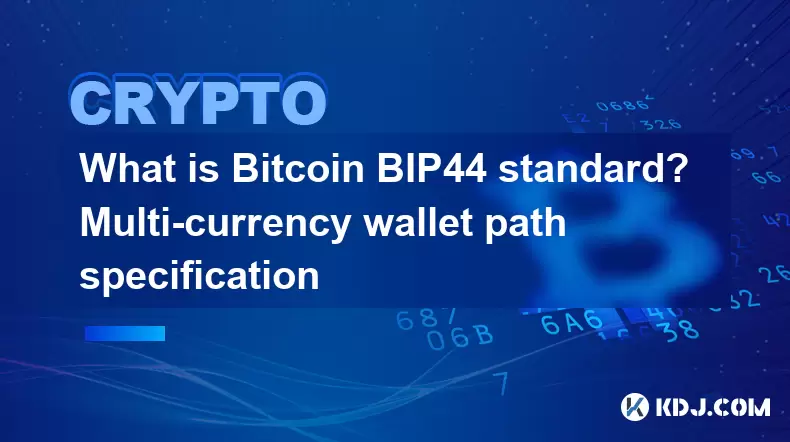
What is Bitcoin BIP44 standard? Multi-currency wallet path specification
Jun 15,2025 at 04:08pm
Understanding the BIP44 Standard in Bitcoin and CryptocurrencyThe BIP44 standard, which stands for Bitcoin Improvement Proposal 44, is a widely adopted hierarchical deterministic wallet structure used across various cryptocurrencies. It defines a structured path format that enables wallets to support multiple currencies while maintaining consistency and...

What is Bitcoin HD wallet? Advantages of layered deterministic wallets
Jun 16,2025 at 03:56pm
Understanding Bitcoin HD WalletsA Bitcoin HD wallet, or Hierarchical Deterministic wallet, is a type of cryptocurrency wallet that generates multiple keys and addresses from a single seed phrase. Unlike traditional wallets that create random private keys for each transaction, an HD wallet follows a structured hierarchy to derive keys in a deterministic ...

Is Bitcoin zero-confirmation transaction risky? Zero-confirmation usage scenarios
Jun 15,2025 at 03:57am
Understanding Zero-Confirmation Transactions in BitcoinBitcoin zero-confirmation transactions, often referred to as 'unconfirmed transactions,' are those that have been broadcast to the network but have not yet been included in a block. This means they have not received any confirmations from miners. While these transactions can be useful in certain con...
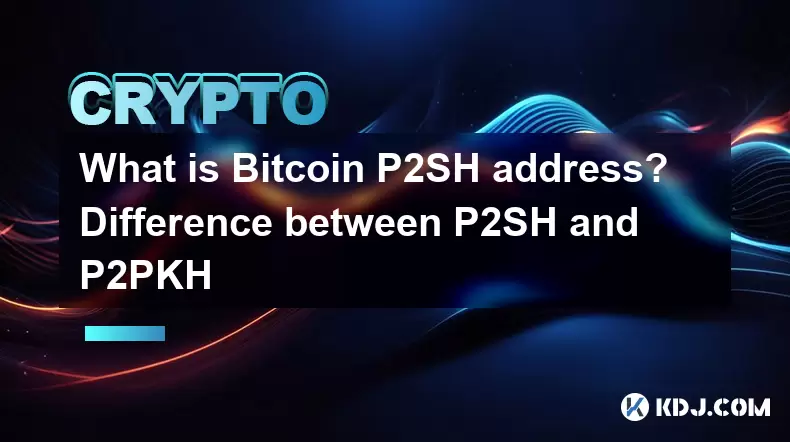
What is Bitcoin P2SH address? Difference between P2SH and P2PKH
Jun 16,2025 at 09:49pm
Understanding Bitcoin P2SH AddressesA Pay-to-Script-Hash (P2SH) address in the Bitcoin network is a type of address that allows users to send funds to a script hash rather than directly to a public key hash, as seen in earlier address formats. This innovation was introduced through BIP 16, enhancing flexibility and enabling more complex transaction type...

Which Bitcoin hardware wallet is better? Comparison of mainstream hardware devices
Jun 16,2025 at 02:08am
What Is a Bitcoin Hardware Wallet?A Bitcoin hardware wallet is a physical device designed to securely store the private keys associated with your cryptocurrency holdings. Unlike software wallets, which are more vulnerable to online threats, hardware wallets keep private keys offline, significantly reducing the risk of unauthorized access. These devices ...

What are Bitcoin non-custodial wallets? Self-controlled private key recommendation
Jun 16,2025 at 11:29pm
Understanding Bitcoin Non-Custodial WalletsA Bitcoin non-custodial wallet is a type of digital wallet where users retain full control over their private keys. Unlike custodial wallets, which are managed by third-party services such as exchanges, non-custodial wallets ensure that only the user can access and manage their funds. This means no intermediary...

What is Bitcoin BIP44 standard? Multi-currency wallet path specification
Jun 15,2025 at 04:08pm
Understanding the BIP44 Standard in Bitcoin and CryptocurrencyThe BIP44 standard, which stands for Bitcoin Improvement Proposal 44, is a widely adopted hierarchical deterministic wallet structure used across various cryptocurrencies. It defines a structured path format that enables wallets to support multiple currencies while maintaining consistency and...

What is Bitcoin HD wallet? Advantages of layered deterministic wallets
Jun 16,2025 at 03:56pm
Understanding Bitcoin HD WalletsA Bitcoin HD wallet, or Hierarchical Deterministic wallet, is a type of cryptocurrency wallet that generates multiple keys and addresses from a single seed phrase. Unlike traditional wallets that create random private keys for each transaction, an HD wallet follows a structured hierarchy to derive keys in a deterministic ...

Is Bitcoin zero-confirmation transaction risky? Zero-confirmation usage scenarios
Jun 15,2025 at 03:57am
Understanding Zero-Confirmation Transactions in BitcoinBitcoin zero-confirmation transactions, often referred to as 'unconfirmed transactions,' are those that have been broadcast to the network but have not yet been included in a block. This means they have not received any confirmations from miners. While these transactions can be useful in certain con...

What is Bitcoin P2SH address? Difference between P2SH and P2PKH
Jun 16,2025 at 09:49pm
Understanding Bitcoin P2SH AddressesA Pay-to-Script-Hash (P2SH) address in the Bitcoin network is a type of address that allows users to send funds to a script hash rather than directly to a public key hash, as seen in earlier address formats. This innovation was introduced through BIP 16, enhancing flexibility and enabling more complex transaction type...
See all articles























